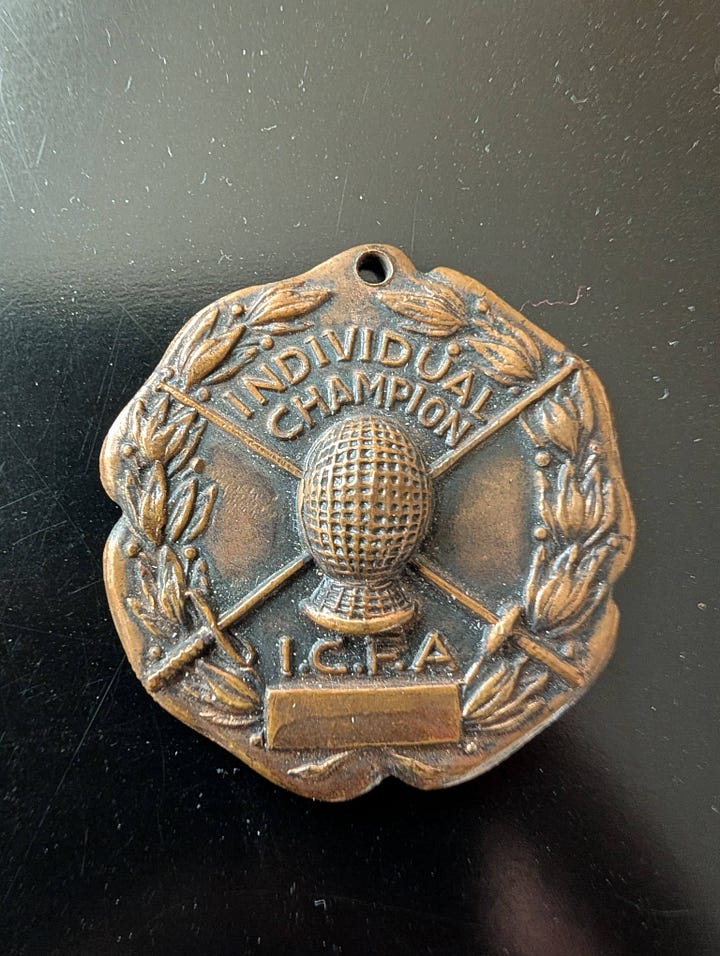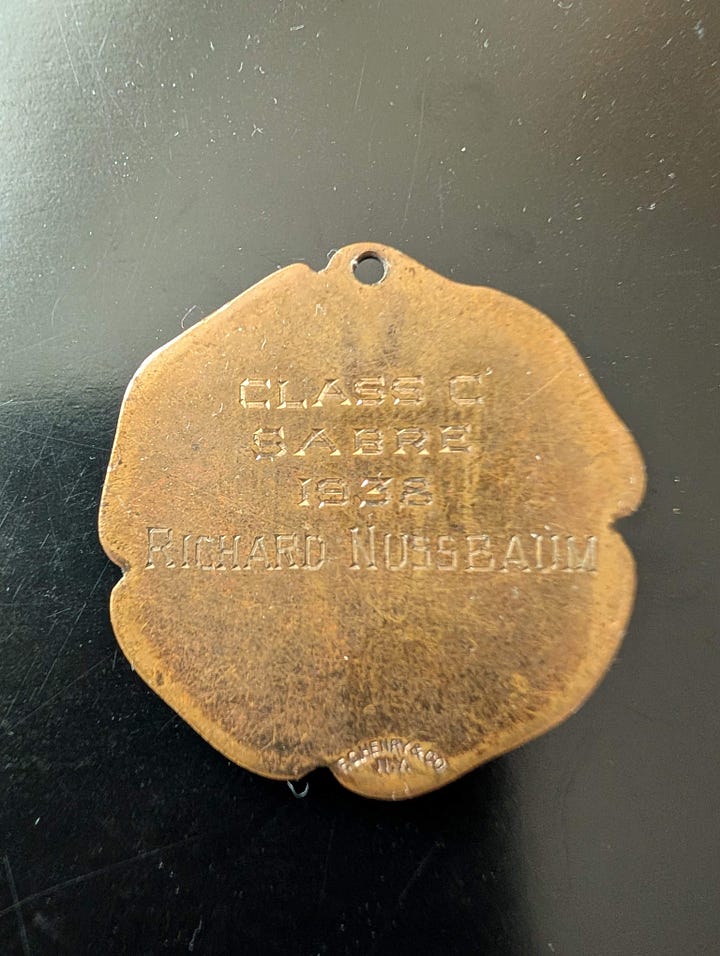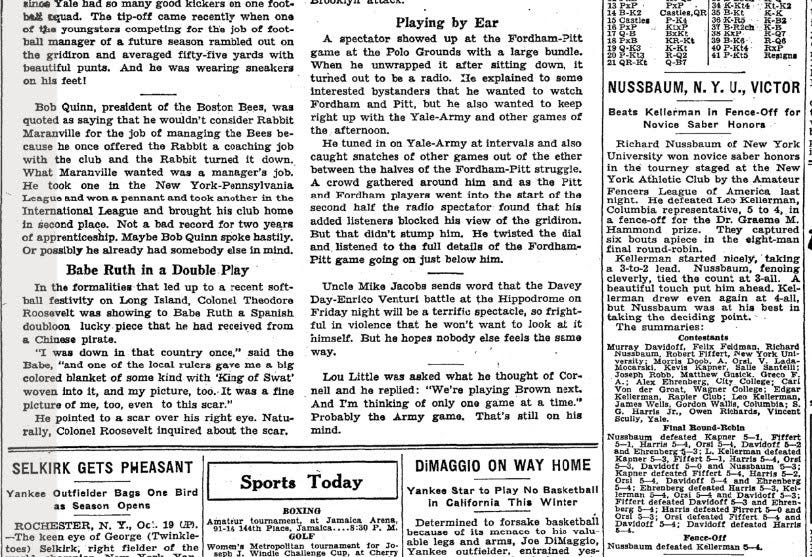On the front of the medal it read "Individual Champion." The reverse "Class C Sabre 1938" and my dad's name.


In recent days, my wife vowed to rid ourselves of unnecessary clutter hidden in the nooks and crannies of our apartment. And as she rummaged through one drawer earlier today, my dad's fencing medal presented itself to her.
My dad was an All American fencer in the late 1930's. The fencing teams at NYU in that era were some of the most dominant in the country. Their coach had been the US Olympic team coach in 1924.
But this medal gave no more particulars, no hint as to the when and where of my dad's accomplishment. And thus my son, master sleuth, named after his grandfather and always interested in taking paths where they lead, in short order determined that this competition had occurred on March 26, 1938 at the Commodore Hotel. His further investigation revealed this building is now known as the Grand Central Hyatt, the site of one of Donald Trump's first grifts. But I am drifting from my point.
In researching my dad's noted athletic achievements, my son came upon a page of the sports section of the New York Times.
Now this was a very different time and wholly different reporting by this paper of the important sporting events of the day. Matters of great note and of little consequence bumping up against one another.
Babe Ruth had retired as a ballplayer after the 1935 season. While in October of 1937 the Babe's activities were still worthy of conversation, his undertakings did not involve winding down after the stresses of a long major league campaign. The headline "Babe Ruth in a double play" focused on his recent softball activities in Long Island. Not what one might consider earthshaking.
Slightly lower on the page was the headline "DIMAGGIO ON WAY HOME." The young center fielder for the Yanks was heading back to California for the off-season, helping out in the family restaurant, considering film opportunities and refraining from playing basketball to protect his body. The Pulitzer committee was not calling.
But the main event, the one that was truly of moment, in the far right column of the page, on most prominent display, was the in-depth report of "NUSSBAUM, N.Y.U. VICTOR.” In great detail the specifics of my dad's winning "fence-off" was chronicled. He was "fencing cleverly," had a "beautiful touch" and was clearly the hero of this contest. His match scores set forth for all to absorb.
If this page of the paper served as proper suggestion for what was deemed of sufficient merit for public consumption, the New York Times of that era was such more the “New York times.” Personal tales of note of those who toiled on the fields of play in this city. As further proof of this, near the reporting of the Babe and Joe D. was one of George Selkirk, then a Bronx Bomber, bagging a pheasant.
Unfortunately, there is no portrait of the star of the story of the N.Y.U. fencing star. If there had been then, to my understanding of family lore, there would have been a report that my dad’s 1937-38 academic year was also a busy one, combining his last year of undergraduate studies with his first of law school at the same university. He would later graduate first in his law school class, besting someone who in another iteration became well known in sporting circles. Howard Cosell.
In October of 1937, Ruth’s baseball playing days were behind him. And DiMaggio, but a fledging star, was more than a decade and a half from marrying an actress of some note, and several decades from hawking coffee. So, in my estimation, my dad richly deserved his billing alongside these two other fellows.
To emphasize this point, my son spoke with someone earlier today who had seen this page of the paper. "I know of your dad," he said, "but whatever happened to those other guys?"
Exactly.




This is really special. One of the few sports joan and I watched at the recent Olympics. Who knew your dad was or could have been an Olympian ?
Family history!!, WONDERFUL!!